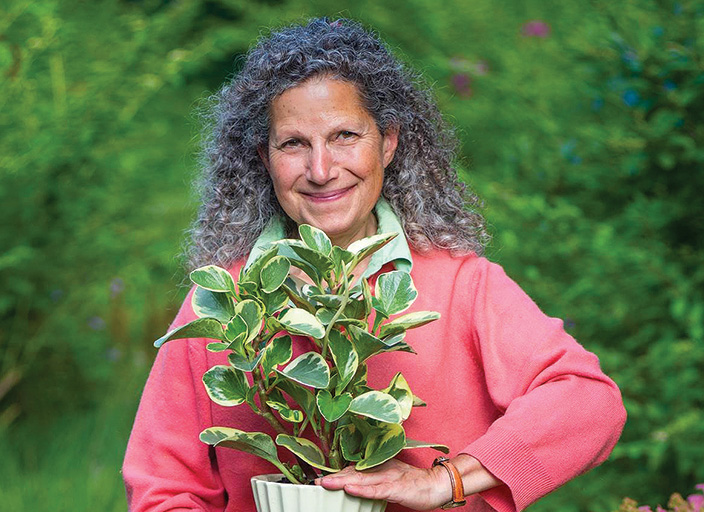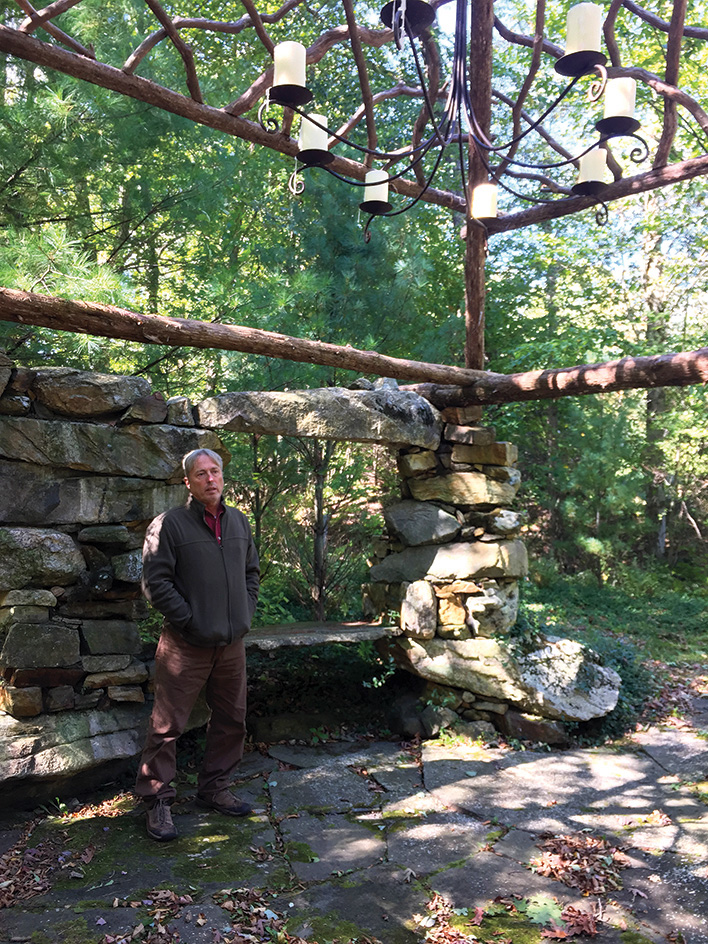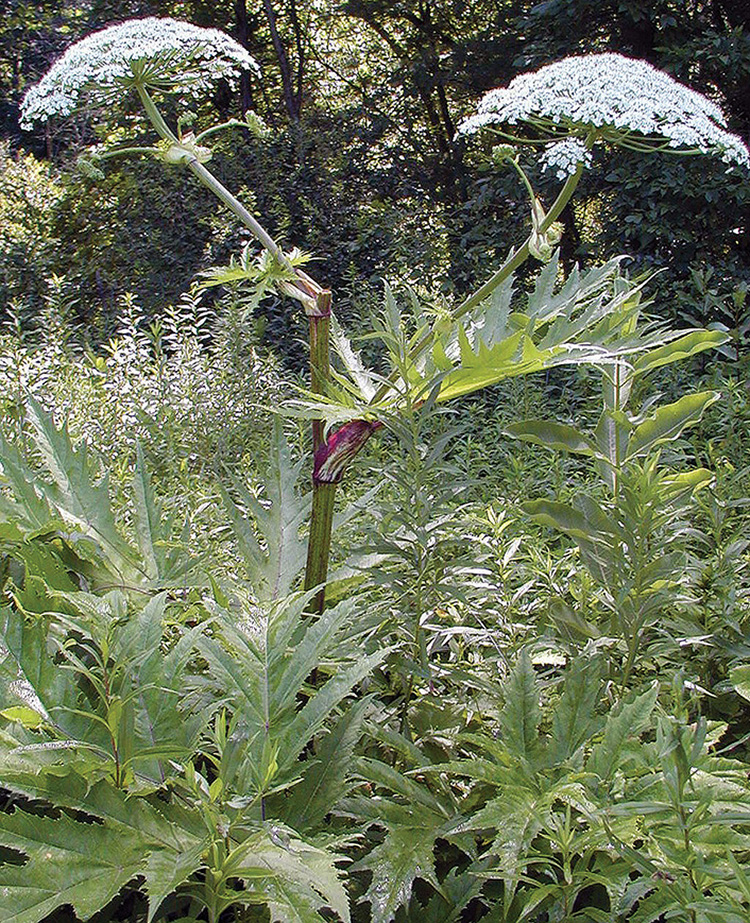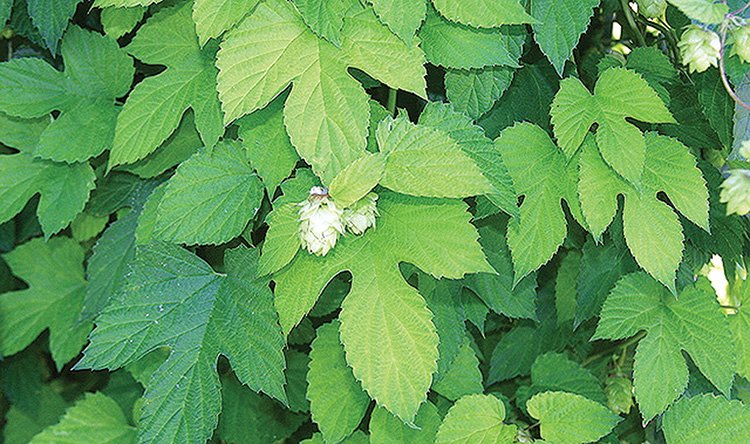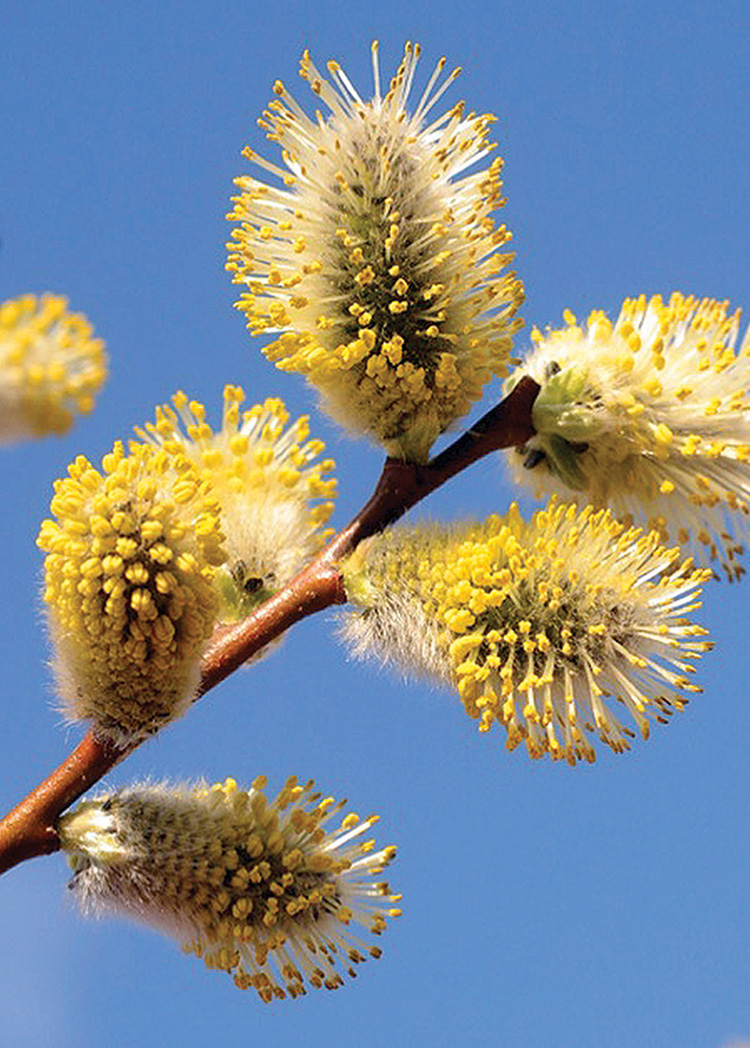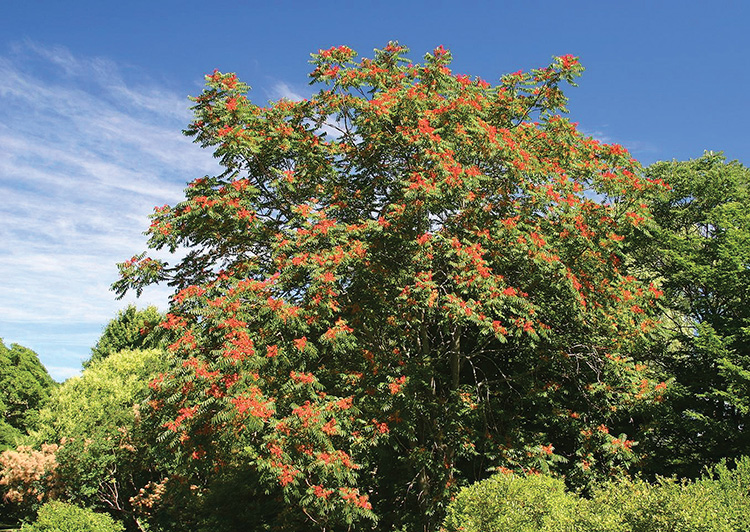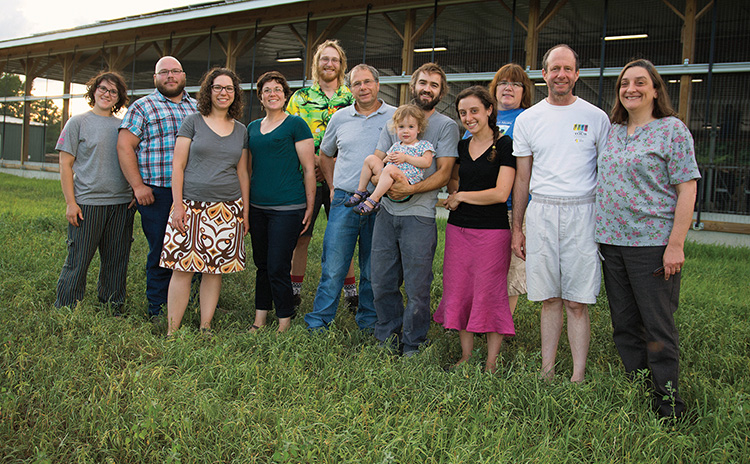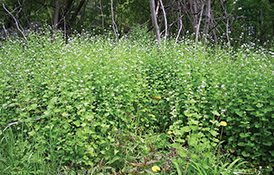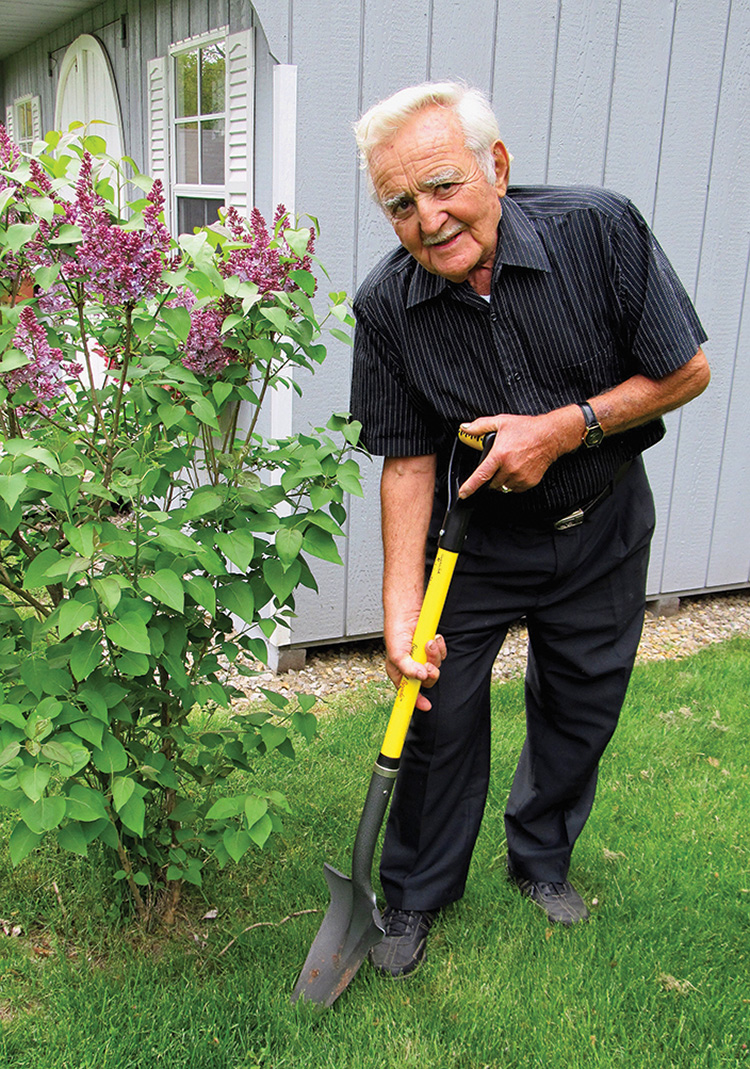MAY-JUNE 2018 – Tovah Martin is more than just a top-notch garden writer, she’s a Connecticut treasure. We’re always excited when we schedule her for a story. Tovah is the author of more than a dozen books on gardening and is a long-time contributor to Connecticut Gardener. She knows gardening from all sides and is well aware that we often have long to-do lists that can make garden-ing seem more like a chore than an avocation. In The Garden in Every Sense and Season, Tovah reminds us to focus less on the checklists and more on enjoying the journey. Martin explores all of the senses in 100 essays that share…
-
-
The Branch Manager
By Anne Rowlands MARCH-APRIL 2018 – Meet Christopher Hawver who – in the late ’90s after 18 years as a celebrated chef – chose to make a career change and pursue life as a rustic furniture maker. Why the switch? Like so many of us who find inspiration and comfort in a natural setting, Hawver was looking for a way into the woods. In his youth, he wondered how to make it possible. Could he be a forest ranger? A fishing or hunting guide? At age 15, however, the door to the woods swung shut when he began a culinary journey that lasted many years until – after taking up…
-
Beware the Giant Hogweed
MARCH-APRIL 2018 – Giant hogweed (Heracleum mantegazzianum) is aptly named. This monster can grow to a height of 20′ and is some-times described as Queen Anne’s lace on steroids. Giant hogweed is a member of the carrot family (Apiaceae) and is native to the Caucasus Mountains in Western Asia, between the Black Sea and the Caspian Sea. It was brought to England and planted at Kew Gardens as an ornamental in the late 1800s and subsequently spread to other parts of the world. It’s considered invasive in Connecticut and is listed as a federal noxious weed in the U.S. According to the Connecticut Invasive Plant Working Group (CIPWG) it was…
-
In Search of Native Hops
SEPT-OCT 2017 – Prior to prohibition, common hops, Humulus lupulus, were grown in Connecticut by folks brewing their own beer. Some of these may have survived in the wild, but may be confused with the invasive Japanese hop, Humulus japonicus. If common hops were found growing locally, they could possibly be more resistant to diseases (e.g., downy mildew) than cultivated varieties. Target breeding this disease resistance into a domesticated variety could reduce pesticide use for locally grown hops. The species are easy to distinguish as common hop leaves are three-lobed or non-lobed while Japanese hops have 5-7 (sometimes 9) lobes. If you find any common hops, please provide Dr. Jim…
-
The Wild & Diverse World of Willows
By Dr. Julia Kuzovkina SEPT-OCT 2017 – Belonging to the family Salicaceae, the genus Salix comprises about 450 species. It is distributed worldwide but occurs mostly in the Northern Hemisphere. Willows occur in several forms: large and small trees, shrubs, and groundcovers that are only a few centimeters tall. Their habits vary from upright, to pendulous, to spreading. Willows are tolerant of a wide range of climates. Predominantly occurring in temperate and arctic zones, they’re also found in the subtropics and tropics. Willows are the only woody species in some alpine zones known as zones of dwarf willows. They also play an important role in the vegetative cover of tundra…
-
In Search of Native Hops
SEPT-OCT 2017 – Prior to prohibition, common hops, Humulus lupulus, were grown in Connecticut by folks brewing their own beer. Some of these may have survived in the wild, but may be confused with the invasive Japanese hop, Humulus japonicus. If common hops were found growing locally, they could possibly be more resistant to diseases (e.g., downy mildew) than cultivated varieties. Target breeding this disease resistance into a domesticated variety could reduce pesticide use for locally grown hops. The species are easy to distinguish as common hop leaves are three-lobed or non-lobed while Japanese hops have 5-7 (sometimes 9) lobes. If you find any common hops, please provide Dr. Jim…
-
Ailanthus altissima – Not So Heavenly
SEPT-OCT 2017 – Tree of Heaven (Ailanthus altissima) is a consummate survivor that tolerates a wide range of climatic and soil conditions. A single tree can produce thousands of wind-born seeds, or samaras, that are released gradually over time. The tree can also reproduce asexually (vegetatively) via root sprouts. This is particularly helpful in low-light conditions where seedlings might not do so well. It may be the fastest growing tree in North America. Sprouts and suckers can grow 14 feet or more in the first season. Seedlings can grow 6 feet in their first year. Younger trees grow faster than old ones, allowing it to take quick advantage of disturbances…
-
Cow Pots – The Pots You Plant
By Will Rowlands JULY-AUG 2017 – There are ideas and then there are ideas. Pet rocks, shoe umbrellas, Tamagotchi, etc., are interesting, if somewhat silly, examples. The Freund family, dairy farmers in East Canaan, came up with one that’s not only functional but benefits the environment in several ways. About 20 years ago, they were looking for a better way to manage the manure generated by their herd of some 250 cows and Matt Freund had an idea. Why not make pots from cow manure? Matthew and Ben Freund, second-generation dairy farmers, were there and took up the challenge. Actually, according to The New York Times, the genesis of the…
-
Invasive Garlic Mustard
JULY-AUG 2017 – Garlic mustard was first reported in the U.S. on Long Island in 1868. It was probably brought here for culinary and medicinal purposes. Its native range includes Europe and parts of Asia and Africa. One of the reasons it’s been so successful here is that its natural enemies are non-existent. Garlic mustard (Alliaria petiolata) is considered invasive in Connecticut. It’s a cool-season biennial herb that starts growing before native plants break dormancy and dies back to brown stalks by mid-summer. It flowers from April to June. It reproduces via shiny black seeds that are held in slender green seed pods (siliques). It will self-fertilize if no pollinators…
-
Spear Head Spade – Made in Connecticut
By Will Rowlands MAY-JUNE 2017 – The Spear Head Spade® was designed by Daniel Mathieu when he was 85. With two artificial knees and two artifical hips, he was finding it increasingly difficult to dig and cultivate his garden. Fortunately, Mathieu is an inventor and designed a garden shovel that does a better job of penetrating tough New England soils. He began with a regular shovel and, by gradually removing bits and pieces of the shovel head, engineered a shovel that uses angles and edges to cut through obstacles and penetrate difficult soils with less effort. As it turned out, many of his friends immediately appreciated the benefits of the…
